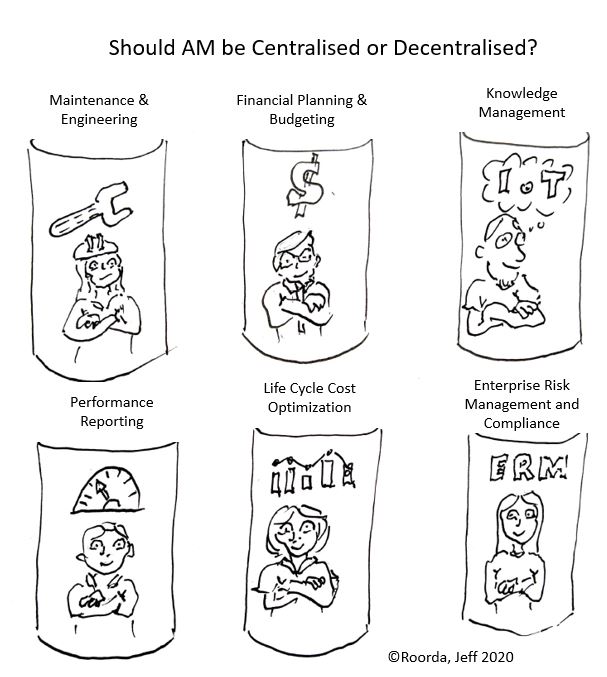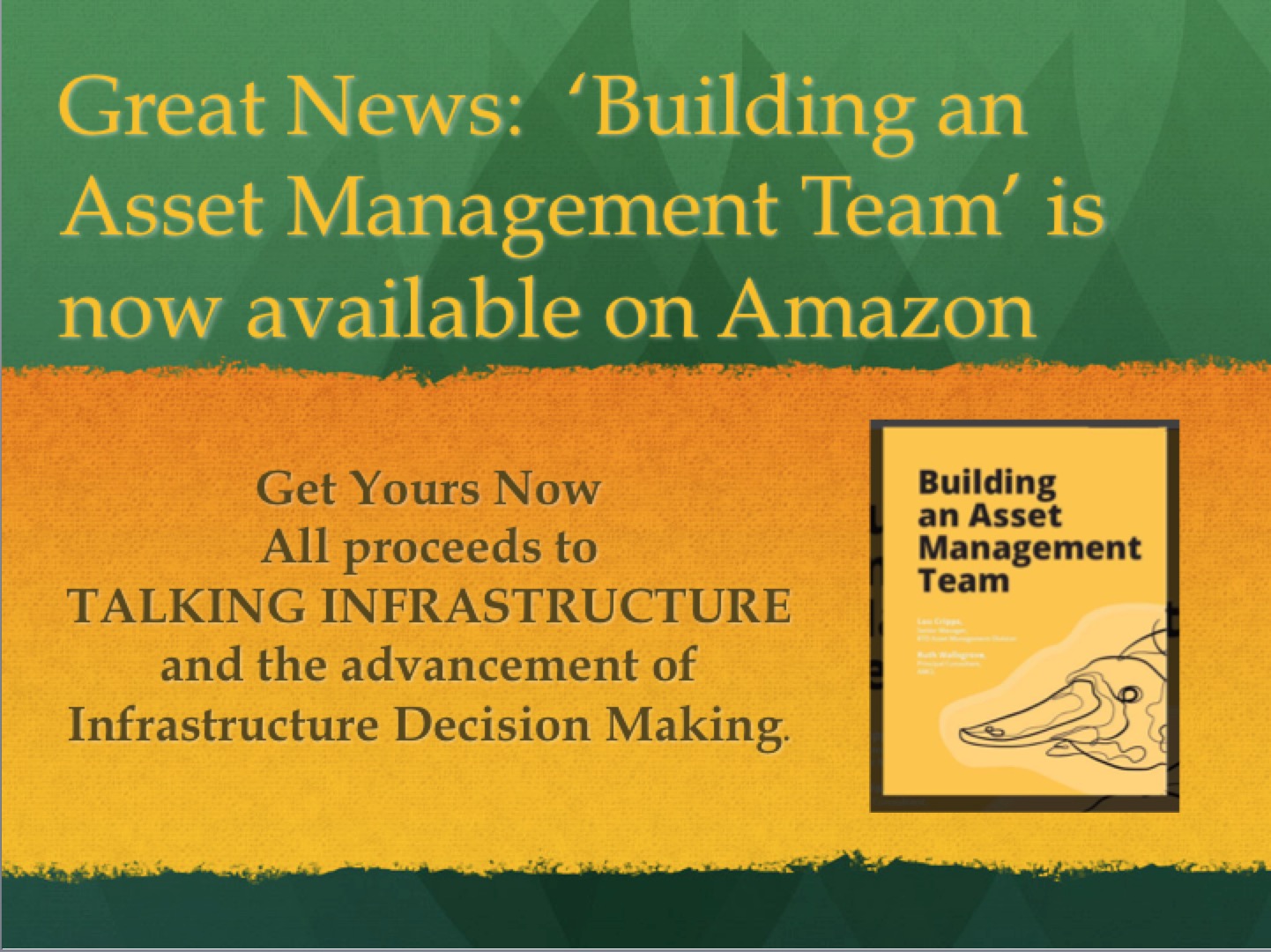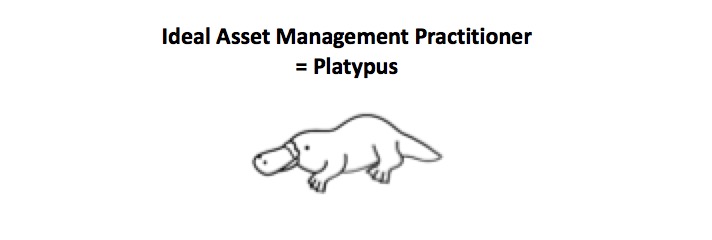
Whether asset management should be centralised or decentralised has been asked since the beginning of Asset Management (AM) as a structured activity. Many organisations have cycled through these structures, some several times. We have seen both models succeed and struggle. Before considering which organizational structure is best, we can learn from what has worked in the past.
The common primary success factors are a good asset management team leader with top management (ISO, 2014) support and commitment over the long term. Without both of these in place, fragmentation into silo’s of finance, maintenance, construction, compliance and knowledge management is the most common result. Often these silos are in adversarial competition for resources with short term horizon of less than 5 years.
The key focus of the ISO 55000 series and IIMM is the role of the AM Leader and the interaction with “top management”. Leadership is not the same as management although they are complementary and often overlap. (IIMM, 2015). A secondary, but essential success factor is at least 2 people who are proficient and have experience in asset management. (Wallsgrove, 2020)
With these success factors in place, that is, top management commitment, a good AM leader, and at least 2 people with AM knowledge and understanding, a centralised structure has a lower likelihood of fragmentation into the AM silos mentioned above.
Good communication skills are the essential attributes of a leader to communicate throughout the organization how the organizational objectives are to be converted into asset management objectives (ISO 55000 2014, 3.3.2). This manages the primary risk of fragmentation of asset management into competing silos with fragmented or inadequate skills.
Both international source documents, ISO 55000 series and IIMM are consistent in defining the roles and responsibilities of asset management in an asset intensive organization as much more than maintenance management.
References
IIMM, I. I. (2015). IIMM International Infrastructure Management Manual.Sydney: IPWEA.
ISO. (2014). ISO55000.Geneva: ISO.
Wallsgrove, R. and Cripps, L. (2020). Building an Asset Management Team .Amazon .
AMQ International’s ‘Strategic Asset Management’, ed: Dr PennyBurns, Issues 270, 298, 371
Footnotes
1. SAM 270 looks at different structures, all of which were adopted successively by an Australian Rail Company when they discovered the problems with the one they were currently using. The whole issue looks at organisational structure.
2. SAM 298 pp 3-5 ‘Four models of AM organisation within councils’
3. SAM 321 ‘A Perfect AM Organisation?’ pp 1-3
4. Roorda (JRA) was the Asset Management Consultant for BART from 2012 – 2015 and established a successful asset management programme for BART (Bay Area Rapid Transit) with John McCormick and Frank Ruffa. AM Council News and Asset Management Implementation and Integration Frank Ruffa

This book should be in every AM office, and at less than $9.99 it won’t even make a dent in your budget. So do it! Here is the Amazon link. Need more encouragement? Then read our 4th excerpt and find out who to have in your team.
Four: What kind of people does an AM team require?
Considering what is required – and the world now has nearly 30 years’ experience of what it takes to make Asset Management work, starting in Australasia and from the late 1990s in Europe – it is not surprising that dedicated AM roles do not suit everyone, and many organizations have made some mistakes in their AM appointments.
It is also true that the different requirements of a well-rounded AM team will always make it unlikely, even undesirable perhaps, that one individual would hold all the necessary skills and experience. Instead, we need each team member to have confidence in their own strengths and complement each other towards a common purpose – very much like the ideal Asset Management organization writ large.
Any AM team requires a balance of people.
- Asset Management is a bridge between business strategy and technical delivery, and therefore must consider the right balance of attributes and skills to deliver this.Bluntly, an Asset Management team that is purely technical, or alternatively has no experience with assets, will struggle. Some experience in the team on front line delivery and, even better, existing relationships with the front line, especially maintenance, is invaluable, but AM also needs good analysis skills and business understanding.
- More challenging for some technical people is the need for good communication skills. Since AM implementation is hugely about communicating what AM is about and facilitating the improvements, AM practitioners must at least value communicating.
- AM functions have to see themselves as promoting, influencing and coordinating rather than directly delivering. (Wally Wells of Asset Management British Columbia calls this the folded arms approach.) This means developing good relationships with a range of other teams. AM practitioners have to be able to acknowledge and respect what other people know, and have some detachment, because their role is to bring together different teams and types of experience & knowledge into asset strategies and integrated planning, not to try to impose their own opinions on asset decisions. They must have a big picture view of the business such that they understand concerns within silos but can explain the needs of the entire organization to put the concerns into context.
- Another specific requirement is for people who can ‘embrace uncertainty’, since AM is at its heart about planning for the future – and the future is always uncertain. For example, ProGas in the Netherlands in the early 2000s focused on promoting smart technical people into asset planning: the only ones who succeeded were those who could cope with making decisions on clearly imperfect knowledge and data. Many could not.
When Penny Burns took the RailCorp Strategic Asset Management team managers through Scenario Planning training, the most important outcomes were making everyone feel a little less certain about the future for the railway – and set us to thinking hard about what data would indicate a real trend.
- The ability to think probabilistically is not intuitive, but it is of great value and can be learned. Those that have developed their understanding of probabilities can use this thinking to help address the uncertainty that is essential to describing systems, predicting outcomes, and influencing outcomes.
- A structured approach to problem solving, even to questions where there isn’t an obvious right answer, or the exact answer can’t be known, is important. AM practitioners should be curious and ask questions, working to discover root causes.
The strongest AM practitioners seem to know when there isn’t a single correct answer, and what set of constraints should be used to move forward with the next best alternative.
An Asset Manager has to be comfortable saying, “I don’t know.”
- It’s also vital to be able to see what is important, the AM principle of criticality, and the balance of ‘cost, risk and performance’ in what we do ourselves.
- AM implementation is about change, so generally will not suit anyone who primarily seeks stability or following the old rules. We need people who have some social skills and ability to build good working relationships, at the same time that they will push for change, in other words stand up for new ways of working.
- Continual improvement requires a desire to learn new concepts and ideas, even when the evidence overturns what you expect. Continual improvement requires a place of pause and reflection before the next Plan-Do-Check-Act cycle is commenced.
- Leadership skills to get others to buy into our new ways of thinking and working.
And the ability to balance the natural tensions that exist between all of these skills….
This is hopefully not to completely depend on unicorns – or platypuses – that we may never find.

We are looking for an odd and tricky combination of attributes. Instead of searching for a very rare and sought after amphibious, duck-billed, otter-footed, egg-laying, beaver-tailed, venomous mammal that locates pray through electroreception – it’s easier to provide all the things we need through a complementary team.
It is also important to understand what skills we don’t need because they exist in other areas and within the asset class groups. We don’t need to be experts in all areas if we can coordinate with others.
RTD’s AM Division looks for these attributes in everyone it hires:
- Highest ethics and integrity
- Cognitive ability
- Objectivity and self-awareness
- Basic numeracy
- Effectiveness
- Curiosity / lifelong learner
- Problem solving
- Humility
- Initiative / motivation and grit
A good sense of humor also helps.

Recent Comments